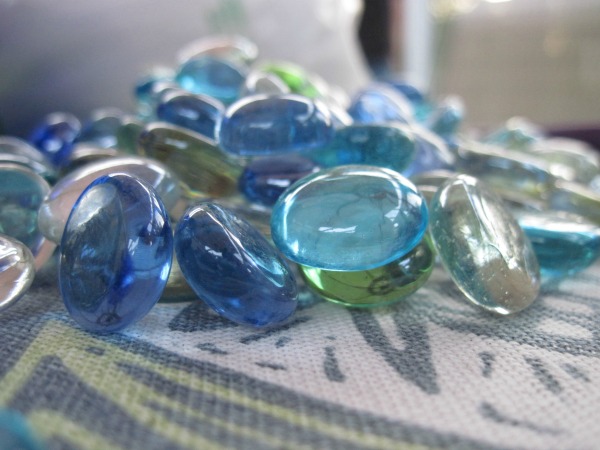Navigation
Install the app
How to install the app on iOS
Follow along with the video below to see how to install our site as a web app on your home screen.
Note: This feature may not be available in some browsers.
More options
You are using an out of date browser. It may not display this or other websites correctly.
You should upgrade or use an alternative browser.
You should upgrade or use an alternative browser.
The 7th Annual BYC Easter Hatch-A-Long!
- Thread starter Happy Chooks
- Start date
aplynn
Chirping
LOL it's a good thing we love em LOLYour so bad
My poor babies will be there very soon. Just starting to get a few breast and back feathers.
Very nice

Thank you!! I was/am so excited... was giggling like an idiot all the way back to the house...
Very good advice!I always fill two 5 gallon buckets with water when a storm that could lead to a power loss is predicted....just for toilet flushing! I also have extra drinking water on hand. I have nearby neighbors with generators but we don't have one. We do have a fireplace and gas stove, so we can keep inside temps up, but no water can be a problem if the outage lasts very long.
All good advice. We have two big 55 gallon drums filled with water outside. Have a couple of others we need to fill. Also have a lot of 5 gallon water jugs filled in the basement. Also have 1 gallon jugs filled for drinking water. Have one in the fridge, just changed that a couple of days ago. Need to change those 5 gallon ones soon.
We have a nice sized generator too. Haven't needed it for eggs yet. I just cover the bator if it's been out for a while. Thankfully, they were far enough along to do that alone.
WHAT YOU CAN DO to save overheated or cold eggs!
What Temperatures Kill In An Incubator?
Hatching Eggs 101 - BackYard Chickens Community

If the electric goes off, you have to do whatever you have to do to keep them warm, if you have to take them to someone that has electric or take them to the car to run them off the car battery. just be careful dont jiggle them too much, the older they are the more tolerant they will be.
ALWAYS have a plan buy an electric power loss alarm!
It will waken you at night, simply plug it into an outlet and it sounds when you loose it! and its cheap!
$6.00

CLICK HERE FOR EBAY SALES
What Temperatures Kill In An Incubator?
WHAT If the Power Goes Off?
BE PREPARED & HAVE A PLAN!
Hatching Eggs 101 - BackYard Chickens Community
If the electric goes off, you have to do whatever you have to do to keep them warm, if you have to take them to someone that has electric or take them to the car to run them off the car battery. just be careful dont jiggle them too much, the older they are the more tolerant they will be.
ALWAYS have a plan buy an electric power loss alarm!
It will waken you at night, simply plug it into an outlet and it sounds when you loose it! and its cheap!
$6.00

CLICK HERE FOR EBAY SALES
This can be done by placing a large cardboard box or blankets over the top of small incubators for additional insulation. To warm the eggs, place candles in jars, light them and place the jars under the box that covers the incubator. Be careful not to put any flammable material closer than a foot from the top of the candles. The heat from the candles can easily keep the eggs above 90°F until the power returns.
Embryos have survived at temperatures below 90°F for up to 18 hours. You should continue to incubate the eggs after the outage; then candle them 4 to 6 days later to check for further development or signs of life. If, after 6 days, you do not see life or development in any of the eggs, then terminate incubation. Most of the time, a power outage will delay hatching by a few days and decrease the hatchability to 40-50 percent.
To understand more about embryo viability & temperatures
Please refer to the following links….
http://metzerfarms.blogspot.com/2011/08/what-temperatures-kill-in-incubator.html
Brinsea ~ Temperature Guide
Temperature Chart pdf
BYC What to do if the power goes out!
http://www.theeggfarm.com/blog/2013/02/07/chick-resuscitation/
Please refer to the following links….
http://metzerfarms.blogspot.com/2011/08/what-temperatures-kill-in-incubator.html
Brinsea ~ Temperature Guide
Temperature Chart pdf
BYC What to do if the power goes out!
http://www.theeggfarm.com/blog/2013/02/07/chick-resuscitation/
A full incubator of eggs
always helps maintain a steady temperature
even if it’s not good for your chicken math!

dry rice heated on wood/or gas stove


HOT HANDS HOT WATER BOTTLES
From ronott1
The leads go to the incubator.
The Genesis 1588 runs on 12V DC
HEAT SINKS/ Stones/Pebbles
ADD THEM TO STYROFOAM INCUBATORS
WHEN YOU SET YOUR EGGS!


Rocks/ glass gems are in troughs under the wire.
I think perhaps more stones are in order for heat sinks
a nice full layer on the bottom and just using cups for added humidity on top of wire until lockdown would probably hold amazingly well
FLAT LARGE ROCKS
Bottles of water
Wrapping a bator for steadier temps
post #25454
KEEPING MOLD and BACTERIAL from growing in water WELLS during incubation post #1644
USING a aquarium pump to humidify incubator Begin post #2028 & Flow control valve post #2054
Trick to raising humidity in egg trays by adding small containers to egg slot! post #42512
FOR MORE TIPS ON INCUBATION
FROM THE Incubation with Friends THREAD
Please click below.....
https://www.backyardchickens.com/a/incubating-w-friends-helpful-notes-links-informational-post-links
If you get one of the STC-1000 thermostats just be careful not to overstrip your wires that you insert into it. Only strip them an 8th of an inch. The connections are really close and make it easy for bare wire to arc the electricity. You should also use solid core wire instead of twisted wire cores on the wires that will go into the STC-1000 for the same reason. The lovely thing about this thermostat is that even though I messed up the wiring (by overstriping) the first time and caused and arc it didn't fry the thermostat only the wires. I replaced the wires and the thermostat was fine. It is a finely built piece.
Number 14 in wire sizes. One of the hardest things I had to wrap my head around is interpreting an electrical schematic into a real life physical objects. I found it helpful to figure out first where in the box/cooler that I wanted the heat source (light bulb or heating element) then the fan and then the thermostat. Do that though after you place your egg trays in so that you don't miss estimate how much space you have and get things too close. When you figure out where everything will go take out the egg trays and draw the footprint that your hardware will take up. Then look at the electrical schematic. You will have bought different colored wires to match those in the schematic. The wire isn't expensive so it is always better to have more than you are going to use than less. Use colored Magic Markers to draw the connections on your cooler/box itself All the wires except the temperature probe will be mounted to the walls anyway. Then you can measure just how much length you need to cut each wire. Wire nuts are your friends. They join all the different wires together. People talk about electricity flowing and it does very much like water. That idea can help you keep some of the arrangement making sense. The flow is not always straight line but more of a downhill kind of idea.
And I find that the only thing more addicting than hatching is making incubators because when it all works and the temps hold and hatch is good your fingers begin to twitch for a reason to make another. Like I think I need a small back up incubator in case the electricity fails and I need to move the eggs.
Thanks so much for all the great info!!!
Count me in! I just bought my very first incubator!
Get a converter for your cigarette lighter in your car. You'll have to have your car running so your battery doesn't die, but it's a cheap, short term solution
Now, I did do this once, the power had been out a full hr. Decided I best do this. Saved my eggs that I had just started the day before. The power was out for 6 hrs!
LOL..that's cute. Glad I'm not the only one when a new egg shows up.Thank you!! I was/am so excited... was giggling like an idiot all the way back to the house...

New posts New threads Active threads
-
Latest threads
-
Polish Hen with Eye Wound from Fighting
- Started by Airamith
- Replies: 1
-
-
-
-
-
-
Threads with more replies in the last 15 days
-
-
-
Is frostbite avoidable without electric heating? Should I add heat to my coop?
- Started by ChickenShepherd_6116
- Replies: 157
-
-
-
×





